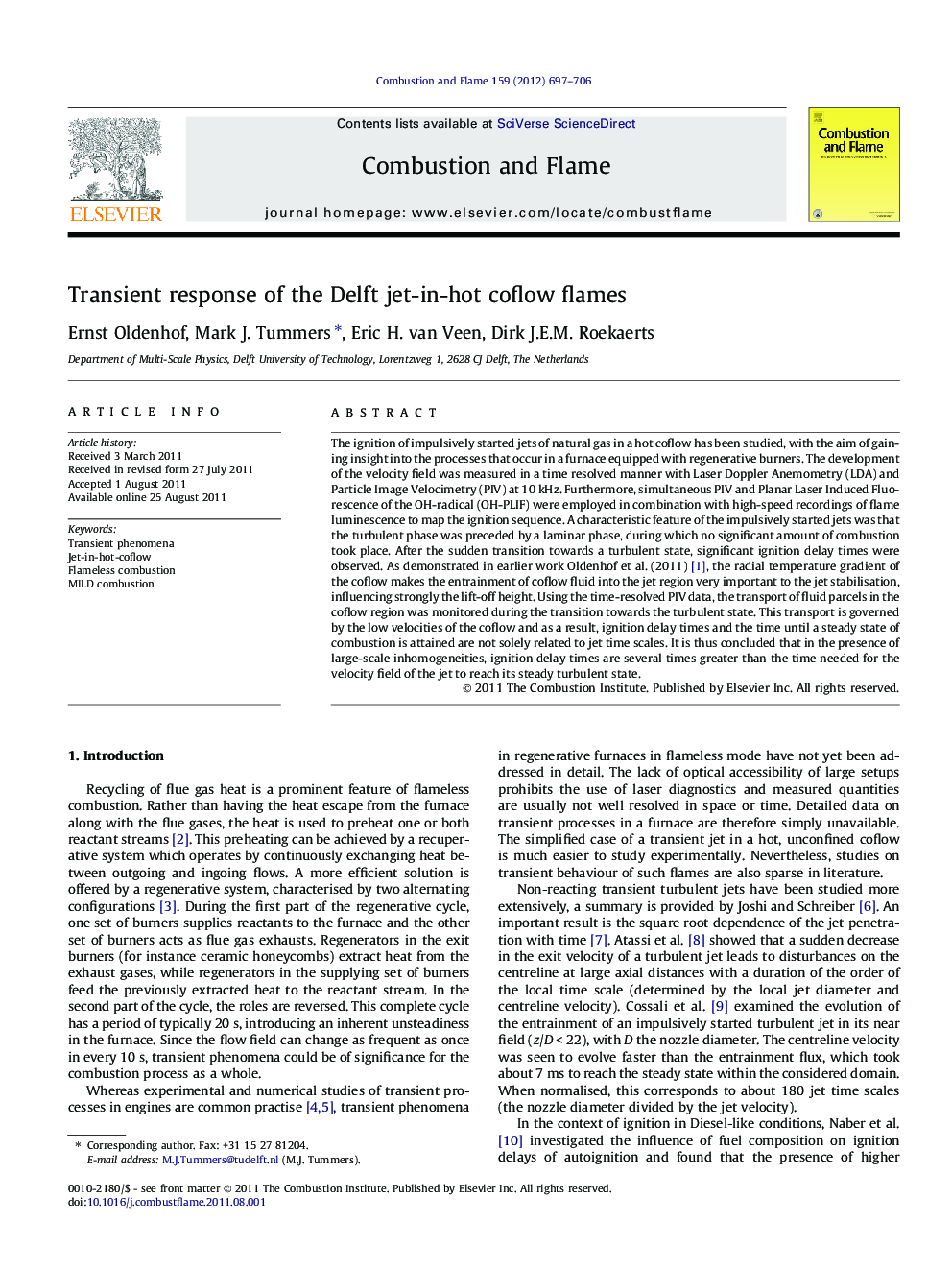| Article ID | Journal | Published Year | Pages | File Type |
|---|---|---|---|---|
| 167271 | Combustion and Flame | 2012 | 10 Pages |
The ignition of impulsively started jets of natural gas in a hot coflow has been studied, with the aim of gaining insight into the processes that occur in a furnace equipped with regenerative burners. The development of the velocity field was measured in a time resolved manner with Laser Doppler Anemometry (LDA) and Particle Image Velocimetry (PIV) at 10 kHz. Furthermore, simultaneous PIV and Planar Laser Induced Fluorescence of the OH-radical (OH-PLIF) were employed in combination with high-speed recordings of flame luminescence to map the ignition sequence. A characteristic feature of the impulsively started jets was that the turbulent phase was preceded by a laminar phase, during which no significant amount of combustion took place. After the sudden transition towards a turbulent state, significant ignition delay times were observed. As demonstrated in earlier work Oldenhof et al. (2011) [1], the radial temperature gradient of the coflow makes the entrainment of coflow fluid into the jet region very important to the jet stabilisation, influencing strongly the lift-off height. Using the time-resolved PIV data, the transport of fluid parcels in the coflow region was monitored during the transition towards the turbulent state. This transport is governed by the low velocities of the coflow and as a result, ignition delay times and the time until a steady state of combustion is attained are not solely related to jet time scales. It is thus concluded that in the presence of large-scale inhomogeneities, ignition delay times are several times greater than the time needed for the velocity field of the jet to reach its steady turbulent state.
